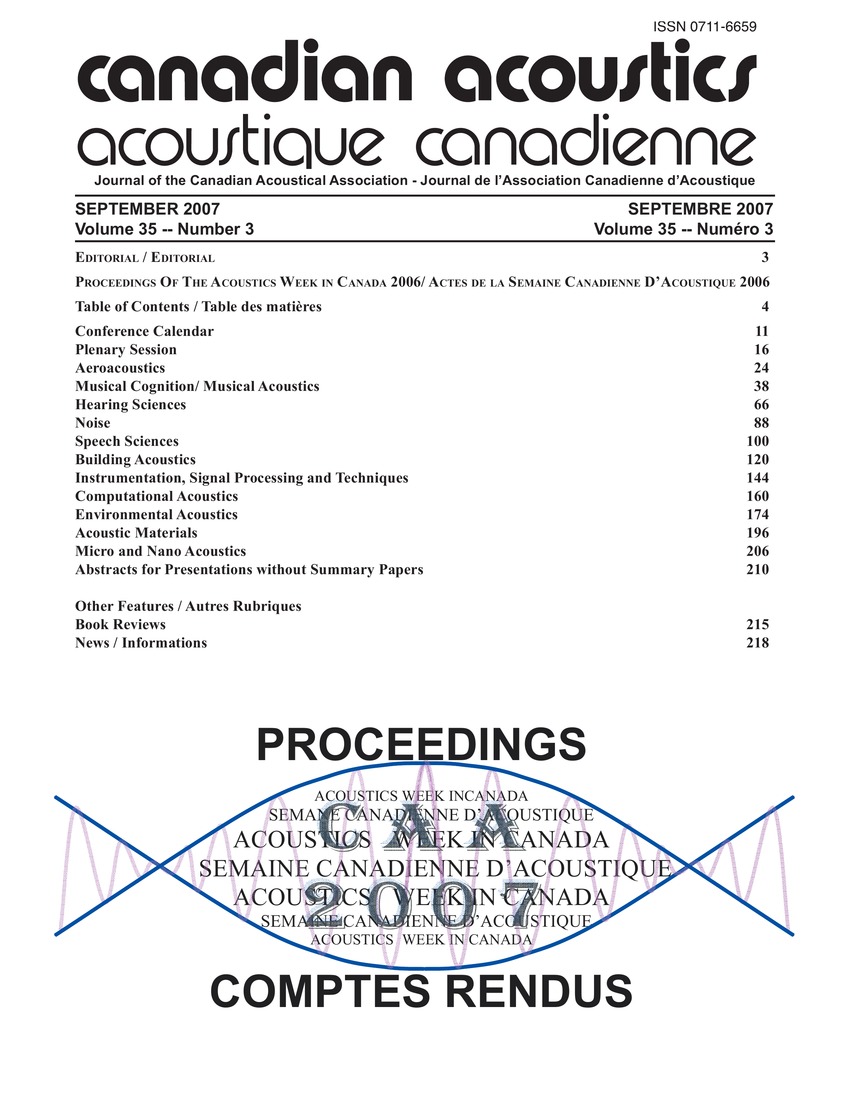Wind turbine noise and meteorological influences
Keywords:
Mathematical models, Meteorology, Speed control, Standardization, Noise levels, Potential masking, Receptor locations, Wind farmsAbstract
The Ontario Ministry of the Environment (MOE) has implemented a simple procedure to assess the noise impact of a wind farm, consisting of a group of wind turbines. The process identifies the locations of the wind turbines within the wind farm as well as all the sensitive receptors within an influence zone of 1 km. It evaluates the noise levels at all identified receptor locations by using a standardized propagation model such as ISO-9613. The procedure also allows the potential masking effect of the prevailing wind noise. Meteorological data, wind speed and direction are obtained as one-hour averages from the weather station near the wind farm. The wind speeds at 10 m high are converted to a hub-height of 80 m and then reconverted back to the 10 m high wind speeds. The results show that local conditions do not follow any set patterns and there can be substantial variations in evaluated noise levels.Additional Files
Published
How to Cite
Issue
Section
License
Author Licensing Addendum
This Licensing Addendum ("Addendum") is entered into between the undersigned Author(s) and Canadian Acoustics journal published by the Canadian Acoustical Association (hereinafter referred to as the "Publisher"). The Author(s) and the Publisher agree as follows:
-
Retained Rights: The Author(s) retain(s) the following rights:
- The right to reproduce, distribute, and publicly display the Work on the Author's personal website or the website of the Author's institution.
- The right to use the Work in the Author's teaching activities and presentations.
- The right to include the Work in a compilation for the Author's personal use, not for sale.
-
Grant of License: The Author(s) grant(s) to the Publisher a worldwide exclusive license to publish, reproduce, distribute, and display the Work in Canadian Acoustics and any other formats and media deemed appropriate by the Publisher.
-
Attribution: The Publisher agrees to include proper attribution to the Author(s) in all publications and reproductions of the Work.
-
No Conflict: This Addendum is intended to be in harmony with, and not in conflict with, the terms and conditions of the original agreement entered into between the Author(s) and the Publisher.
-
Copyright Clause: Copyright on articles is held by the Author(s). The corresponding Author has the right to grant on behalf of all Authors and does grant on behalf of all Authors, a worldwide exclusive license to the Publisher and its licensees in perpetuity, in all forms, formats, and media (whether known now or created in the future), including but not limited to the rights to publish, reproduce, distribute, display, store, translate, create adaptations, reprints, include within collections, and create summaries, extracts, and/or abstracts of the Contribution.


